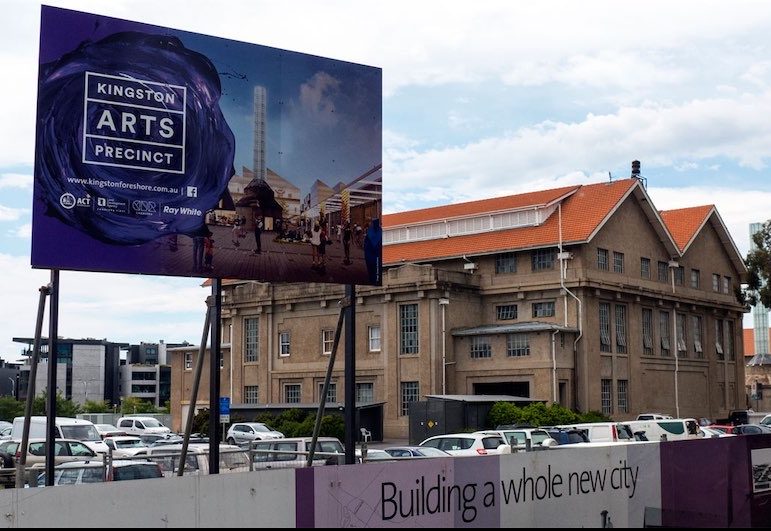
“It is said that arts organisations signed confidentiality agreements not to discuss what’s happening with the Kingston development. This secrecy is frustrating locals and heritage groups committed to having this arts precinct succeed,” writes PAUL COSTIGAN.
THE Kingston Arts Precinct initiative has been the subject of irregular announcements for almost two decades.

This saga has mainly been about strategies, announcements, a couple of presentations at meetings, worthy statements about community engagement – and then lots of silence.
The concept kicked off in 2003 as part of an ACT arts facility’s strategy, with more strategy work by artsACT in 2011 and some time after that the former Land Development Agency made grandiose announcements that the arts precinct was to happen. There was probably another strategy.
The Suburban Land Agency now handles this project and has listed 2015 as the start date. What’s a little rewrite of history?
This promised a “vibrant” precinct (their word not mine) will house a mix of arts organisations (mainly visual arts), and to paraphrase – “be well-connected to its immediate communities and the broader Canberra community – celebrate and respect the indigenous and early settlements including its industrial history”. What could go wrong?
The processes have become known for the long silences between the occasional meetings along with little to indicate that there will be adequate recognition of the site’s heritage. The government agencies are relying on the developer to do the master planning and as part of that, it is expecting the developer to honour the heritage values.
The developer is doing what ACT developers do – trying to squeeze in as many apartments as possible. The challenge for the ACT Arts, Environment and Heritage Ministers is to deliver on their government’s commitments. The local communities are observing a painfully slow process of boxes being ticked, but fear the reality of the secretive planning processes will be something else – a badly missed and messed up opportunity.
Having dropped the ball on other heritage matters, this significant cultural development presents the ACT Heritage Minister with the opportunity to respond with more than her well-established enthusiasm. Has she got the will to deliver real outcomes against the well-documented heritage issues?
At the moment it seems that at least seven arts organisations have signed up to be on the precinct site as part of the larger commercial and residential development.
If what has been reported is true, an amazing thing happened that portrays the tenor around how the community engagements are being conducted. It is said that the arts organisations signed confidentiality agreements not to discuss with others what is happening with the development. This wall of silence and secrecy is frustrating locals and heritage groups who are totally committed to having this arts precinct succeed. This is not quite the community engagement promised in published documents and strategies.
But more to the point, what the hell has happened to how arts organisations are being run in the 21st century in Canberra?
To quote from the Australia Council: “Arts and culture are a public good and Australians increasingly recognise their positive impacts in our lives and communities. The arts are vital human expressions that connect us with one another, and with our past and present, and help us to imagine our future. Experiencing arts and culture connects us with ideas, emotions and stories, and sparks pleasure, meaning, imagination and empathy. In so doing, it builds social cohesion”.
The local arts managers and boards need to read those statements a few times and think about why their attitude to the local communities is being viewed as patronising and short term. Sometime in the near future, the arts bureaucracy will most likely deliver cutbacks in funding because these government-funded bodies are conveniently in the one precinct and can share stuff. Will they then ask the community for support to regain funds?
There are many rumours of the deals being done and that one of the organisations is quietly trying to claim a larger slice of the action. Such rumours could be just that – rumours. But while secrecy is entrenched in these processes, good relationships with local communities cannot be taken for granted.
The concept was good. Unfortunately, residents are fearful that the reality of what will be announced next will be a done deal – and will be not so good.
Paul Costigan is an independent commentator and consultant on the visual arts, photography, urban design, environmental issues and everyday matters.
Who can be trusted?
In a world of spin and confusion, there’s never been a more important time to support independent journalism in Canberra.
If you trust our work online and want to enforce the power of independent voices, I invite you to make a small contribution.
Every dollar of support is invested back into our journalism to help keep citynews.com.au strong and free.
Thank you,
Ian Meikle, editor




Leave a Reply